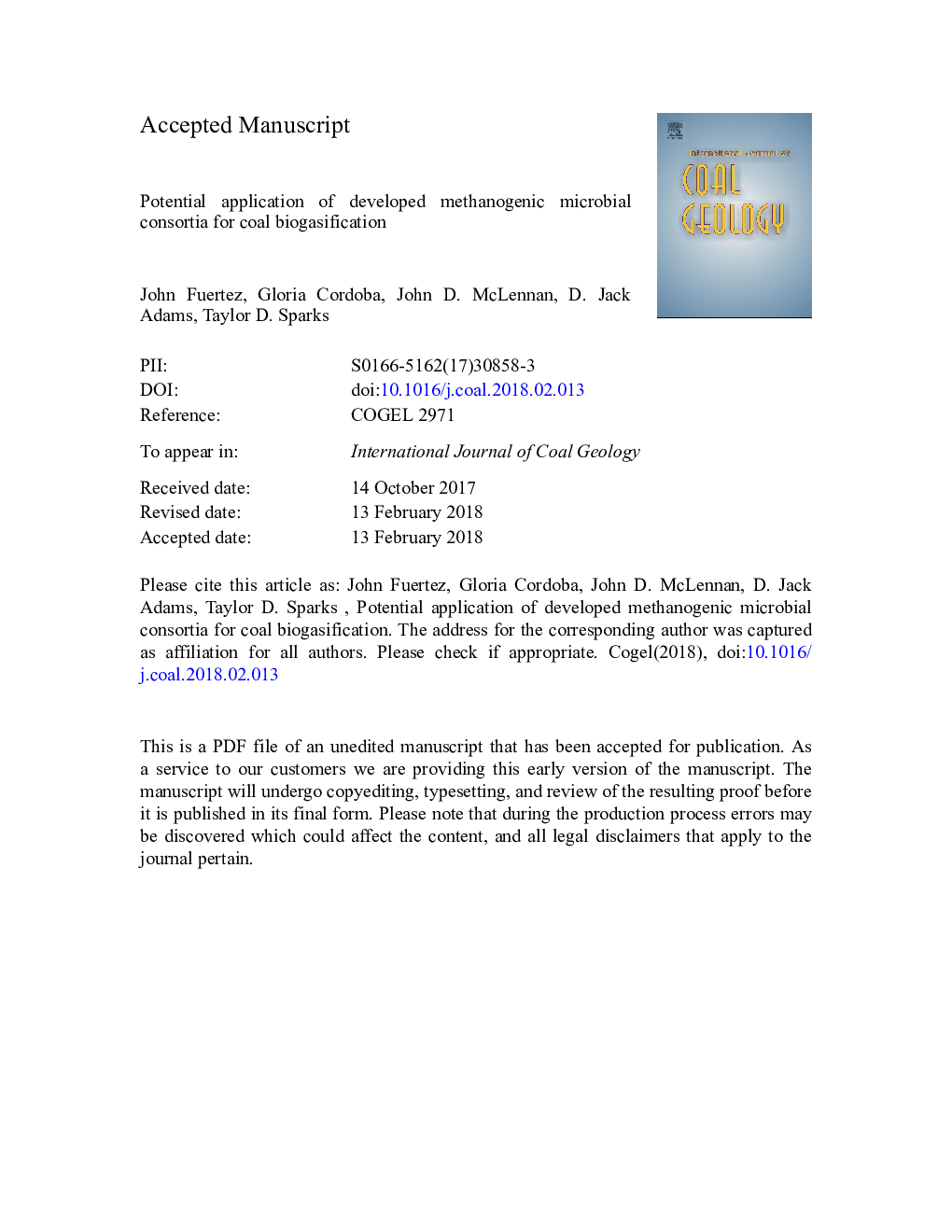| Article ID | Journal | Published Year | Pages | File Type |
|---|---|---|---|---|
| 8123536 | International Journal of Coal Geology | 2018 | 56 Pages |
Abstract
Microbially enhanced coalbed methane has become an important research topic in the later years. The biological conversion of coal to methane can be conceived as a feasible and environmental friendly approach for improving coalbed methane production. Within the strategies for stimulation of gas production, the addition of a microbial consortium or bioaugmentation can be seen as a promising alternative. However, relatively few studies have been conducted on the strategies for enriching microbial population ex-situ under initial atmospheric exposure for subsequent injection into coal seams to stimulate biodegradation and methanogenesis. The development of methanogenic microbial consortia, especially those that can tolerate moderate and low oxygen concentrations and still retain anaerobic functionality, can be considered as an attractive biological complement for coal biogasification. The performance of promising microbial consortia was evaluated at low concentrations of nutrient amendments (e.g., 22.4% v/v, 3.36â¯mg/cm3 TSB) and [NaCl] 6.6â¯mg/cm3 as a possible scenario and to foresee the elevated costs of nutrient utilization at large-scale operations (i.e., in-situ and/or ex-situ applications). Incubation periods of up to four months were tested at 23â¯Â°C. Headspace concentrations of CH4 and CO2 were analyzed by gas chromatography. After 61â¯days of incubation for the most promising microbial samples, generated headspace gas concentrations reached 95,700â¯ppm (14â¯sft3/ton) for methane and 37,560â¯ppm (5.5â¯sft3/ton) for carbon dioxide. Microbial diversity in promising consortia was investigated. Both bacteria and archaea were identified.
Related Topics
Physical Sciences and Engineering
Earth and Planetary Sciences
Economic Geology
Authors
John Fuertez, Gloria Córdoba, John D. McLennan, D. Jack Adams, Taylor D. Sparks,
